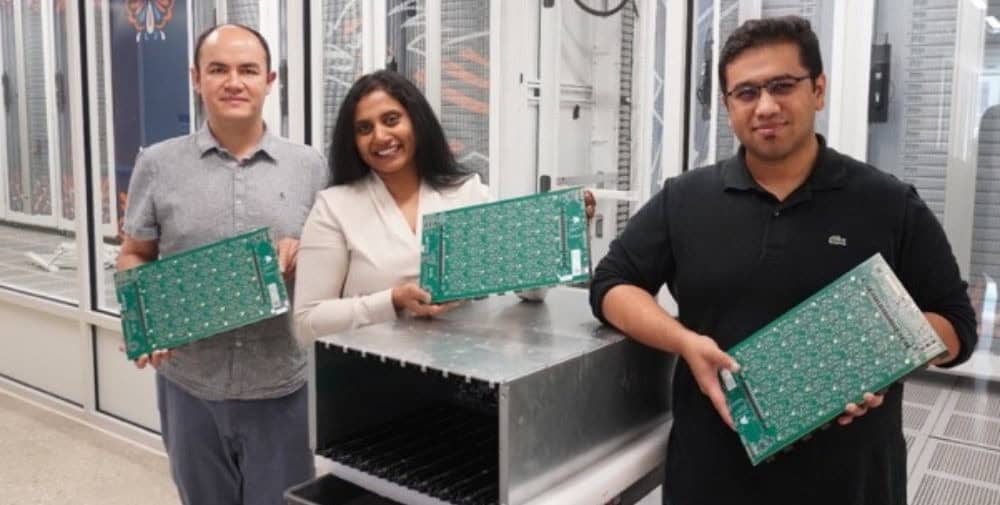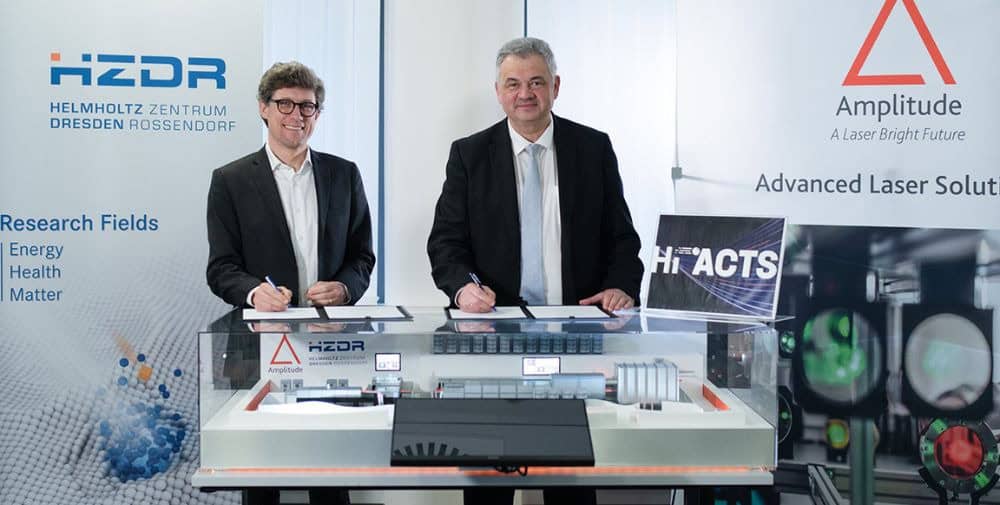
Instead of using electrical signals, as in a conventional computer, an optical processor from Akhetonics can process data using light. Photons allow a higher bandwidth and transmission speed than electrons. This could not only make it significantly more powerful, but also save 60 times more energy.
Quantum computing also uses alternatives to electronic circuits, in this case quantum mechanical states known as qubits. Photonic quantum computers use the photons already present in the system as qubits. However, photonic assembly and connection technology is technically extremely demanding, which is why optical quantum computers that have been realized to date are still equipped with a combination of electrical and photonic components. However, purely optical quantum computing seems possible – as demonstrated by laboratory setups, which are often large and bulky. As with the early PCs of the 1970s, decisive steps towards miniaturization and optimization are now imminent. Among other things, a packaging solution must be found for the integrated optics.
Component and connection technology is the key
And this is precisely the aim of the SPOC (Scalable Packaging for All-Optical CV Quantum Computing) project: Together, the Berlin-based startup Akhetonics GmbH and the Fraunhofer Institute for Reliability and Microintegration IZM are aiming to develop and build a thin-glass-based integration bench that will enable scalable packaging for all-optical quantum computing. The hybrid integration of different optical materials on a common platform is crucial for this. Different optical components offer different advantages for special tasks, but also have their own requirements in the integration process. By combining these special units, photonic systems can be made more powerful and versatile. This is where Fraunhofer IZM’s experience in the assembly and connection technology of optical systems and its know-how from past research projects comes into play. The basis is a glass-based interposer that is precisely structured at the institute using selective laser etching. The interposer is fitted with optical chips that are coupled together using photonic wire bonds. Photonic wire bond technology works like an ultra-precise 3D printer that connects optical components using tiny light-conducting polymer structures. With this technology, the coupling efficiency can be increased by 50% compared to a direct connection of fiber and chip.
Akhetonics GmbH then integrates the interposer into the hardware and tests it extensively. The first computing operations can already be carried out. The aim is to create a purely optical quantum processor in several intermediate steps that build on each other.
The SPOC project runs from July 1, 2024 to December 31, 2026 and is funded by Investitionsbank Berlin IBB with 400,000 euros as part of Pro FIT project funding under the project number 10206870. In addition to Fraunhofer IZM, Akhetonics GmbH is also involved in the project.
(Text: Steffen Schindler)
– – – – – –
Further links
👉 www.izm.fraunhofer.de
Photo: Fraunhofer IZM




